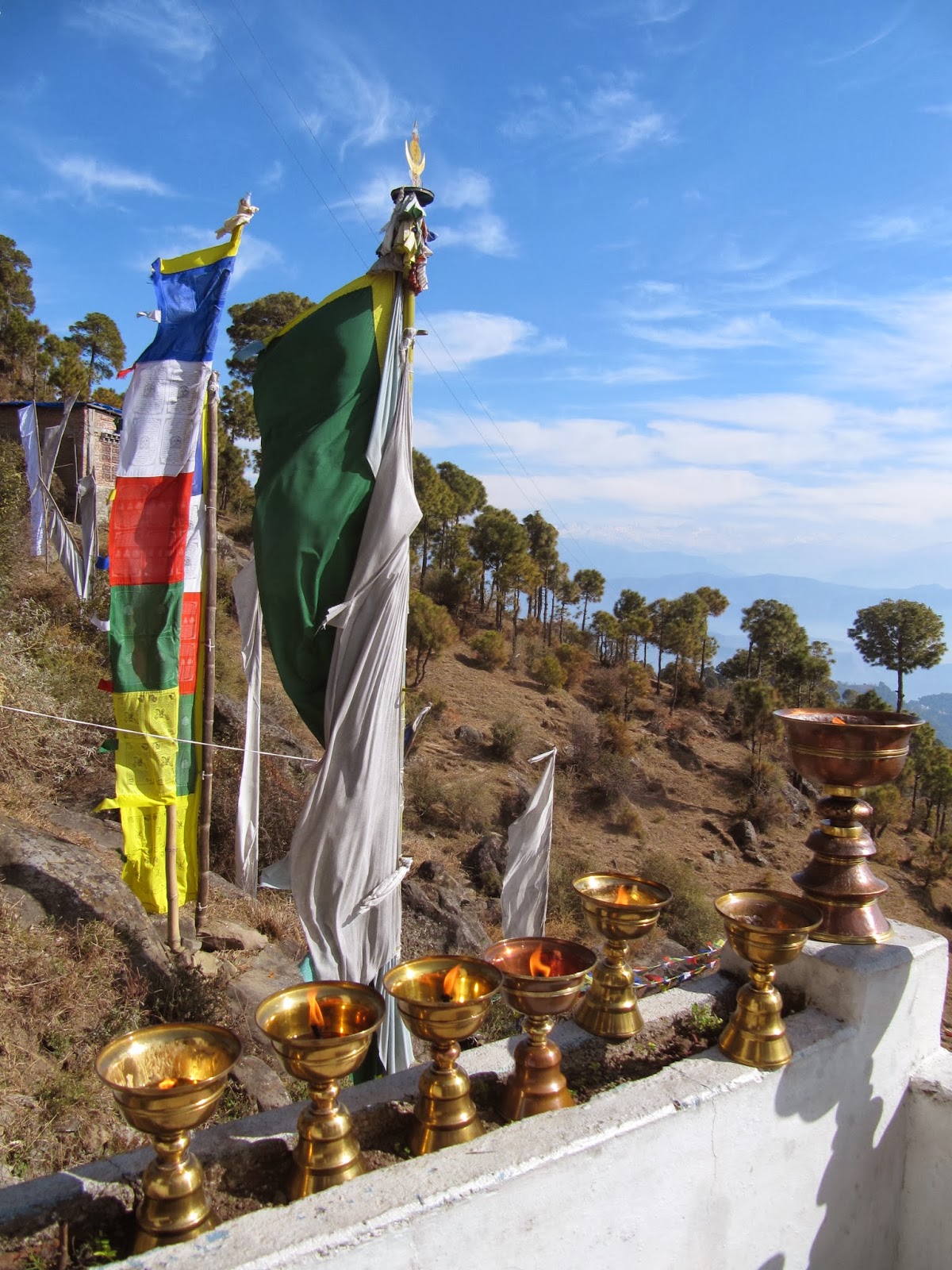For my second day trip, my Tibetan co-teacher and I headed out to a very holy town for not only Buddhists, but also for Hindus and Sikhs. The area is called Tso Pema in Tibetan, but you may also hear it called Rewalsar in its Hindi name as well. Tso means lake and Pema means lotus, so it is actually Lotus Lake.
According to Wikipedia:
The famous Rawalsar lake ('Tso Pema' to Tibetans) is associated with Padmasambhava (also known as Guru Rinpoche), who is recognized as a second Buddha. One version of a legend has it that the king of Mandi had Padmasambhava burnt alive after rumours that the Guru had attempted to teach his daughter the Dharma, which was not accepted then. The pyre burned for a full week, with great clouds of black smoke arising from it, but after a week, a lake appeared at the spot where he was burnt and Padmasambhava manifested himself as a 16 year old boy from within a lotus in the middle of the lake. The king, repenting his actions, married his daughter with Padmasambhava. It was from Tso Pema that Padmasambhava went to Tibet to spread Vajrayana Buddhism.
However, our first stop here was not the lake, but the caves in the mountains nearby which make this area so famous for Buddhists. It was here in these caves that Padmasambhava found enlightenment. Padmasambhava is considered a second Buddha and the one responsible for bringing Buddhism to Tibet. There are four important caves here, although, from the outside you would never know that they were caves. Outside of the caves, houses and roofs have been constructed and inside the caves the floors have been tiled and stairs have been put in, so actually they have become caves converted into temples or shrines.
Inside the first cave: A portrait of a famous lama
Some cave-like walls still remain...
Butter Lamps
Burning butter lamps
However, the most famous cave here is the small one containing the supposed footprint of Padmasambhava. My co-worker was a little surprised when he saw it, he thought it was too big to really be his footprint....
Padmasambhava's Footprint
Butter lamps outside of Padmasambhava's Footprint
Shops before the temple selling many offerings to leave at the Hindu temple
As we continued to hike up the mountain here, we came across a very big and beautiful Hindu temple. Though we didn't know much about the temple or Hinduism, it was still fun for me to walk around. One thing to note, that when you enter the grounds of a Hindu temple, you must remove your socks and shoes, even when walking around the outside of the grounds. Fortunately it was a warm and sunny day, so it wasn't a problem.
Inside the temple was smokey from all the incense burning. Around the perimeter of the inside of the temple, there were bells hanging every meter or so. As we and the other visitors walked around the temple, we rang each bell as we walked by. Very fun. Not sure about what the meaning of it is, but there is something about ringing a bell that makes you feel good.
After checking out all the caves and the Hindu temple, which took about 2 hours, we got back in our cab and headed to the actual lake itself. Stay tuned for Part 2 where I will introduce the rest of the holy places!













ringing of the bell is normally to indicate that u are entering the god's house and u are willing to make a worship.... it is also to kill off the negative energy around u...as vibration from the bells would kill off the negative magnetic force around u... and well, u have to remove ur shoes and socks as when u walk around , u wear ur shoe and it carries the dirt from all over and by removing it and washing ur feet indicate that u are entering with purity..normally hindus would bath before they visit a temple..as bathing means that u are purifying urself...
ReplyDeleteThanks! Great information!
ReplyDelete